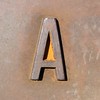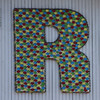I am enclosing a link to my efolio that has been created over the years. This is an on going process and could use more of my attention in getting updated as of late.
http://loribudahn.efoliomn.com/
Tuesday, August 19, 2008
#8 Sharing your Creations on Blog or Website
Wow I remember this one taking quite a bit of time. I chose the site www.Slideshare.net Yes I needed to create an account complete with username and pswd.
What I did was watch a presentation made by Merlin Mann. The brains behind an even longer Web 2.0 discovery "class" called 43FOLDERS.COM
This presentation like the one I remember from Stick 7 was equally applicable.
1. Identify Leaks
2 Govern Access
3. Minimize Notifications
4. Work in Dashes
5. Renegotiate
So what is he talking about? Amazingly these 5 Patterns apply to so many areas of our lives.
1. Find the holes and seal them to stop junk from coming in.
2. Govern Access: Be mindful about decisions about who gets access 1) to you 2) when 3) anad for how long. Who gets Access NOW, cuz it says alot about who you are.
3. Minimize notifications. Turn off the "mindless" bells and whistles. Save alarms for REAL attention needs.
4. Break your tasks down into your "typical" windows of availability or it will not get done.
Work in Dashes. 10/50 = Collect and Process for 10 Minutes --> Work for 50 Minutes REPEAT
Renegotiate: Don't say a Flat OUT YES the first time. Qualify it as a Yes but.... *Kinda * Maybe * Later * A Little
Motivating yes, But does not isnspire me to take even more time and create one of my own.
I emailed this presentation to myself as a reminder to keep searching for a Really good one to add to my blog site.
What I did was watch a presentation made by Merlin Mann. The brains behind an even longer Web 2.0 discovery "class" called 43FOLDERS.COM
This presentation like the one I remember from Stick 7 was equally applicable.
1. Identify Leaks
2 Govern Access
3. Minimize Notifications
4. Work in Dashes
5. Renegotiate
So what is he talking about? Amazingly these 5 Patterns apply to so many areas of our lives.
1. Find the holes and seal them to stop junk from coming in.
2. Govern Access: Be mindful about decisions about who gets access 1) to you 2) when 3) anad for how long. Who gets Access NOW, cuz it says alot about who you are.
3. Minimize notifications. Turn off the "mindless" bells and whistles. Save alarms for REAL attention needs.
4. Break your tasks down into your "typical" windows of availability or it will not get done.
Work in Dashes. 10/50 = Collect and Process for 10 Minutes --> Work for 50 Minutes REPEAT
Renegotiate: Don't say a Flat OUT YES the first time. Qualify it as a Yes but.... *Kinda * Maybe * Later * A Little
Motivating yes, But does not isnspire me to take even more time and create one of my own.
I emailed this presentation to myself as a reminder to keep searching for a Really good one to add to my blog site.
#7 Email
I read the "Five Fast Email Productivity Tips". My husband might say that I need them tattooed to me somewhere. I go through separation anxiety with emails my kids said me. I have tried to save them by transferring them out of my email account and onto the hard drive of our computer. Well I did that "bad habit" 3 computers ago. So much for saving them.
1. Shut off auto-check (at least when I am not at work)
2. Pick off easy ones - DELETE THEM before they even get opened. Reply without a greeting.3.
3. WRITE LESS A published author I am NOT
4. Cheat. Use a template to reply-cut corners to save time
5. Be honest. (If your never going to reply DELETE the message) Oh like those 2 really follow each other well. I hope you know which to use when
In a nutshell Be More Efficient
1. Shut off auto-check (at least when I am not at work)
2. Pick off easy ones - DELETE THEM before they even get opened. Reply without a greeting.3.
3. WRITE LESS A published author I am NOT
4. Cheat. Use a template to reply-cut corners to save time
5. Be honest. (If your never going to reply DELETE the message) Oh like those 2 really follow each other well. I hope you know which to use when
In a nutshell Be More Efficient
Thing #6 Online Image Generator
I used Image Chef. What I find difficult about doing these sticks is that you do end up creating a new account for each stick at a differect web address. As I have worked through the sticks I have had to email myself the information I used to create all of these new accounts.
In Stick #6 I made a baseball jersey with my sons favorite colors and put our last name on the back of it just like they do in real baseball. I also made one for my nephews and sent the images to myself. I intend to use the images on birthday cards for them. I know they will really like it.
I am choosing NOT to post my jersey here since it does have my last name. Hope that is ok. Was very cool.
In Stick #6 I made a baseball jersey with my sons favorite colors and put our last name on the back of it just like they do in real baseball. I also made one for my nephews and sent the images to myself. I intend to use the images on birthday cards for them. I know they will really like it.
I am choosing NOT to post my jersey here since it does have my last name. Hope that is ok. Was very cool.
Thing #5 Spell w Flickr
Time for me to turn up the time that I spend entering all the cool things I have learned with my "Sticks". I love sharing it with my oldest child, who just happens to be an educator as well. Directions that I swiped from "Charmed One" say You can export the spelled word the same way you exported your avatar. You copy the html that follows your spelling. Then you go back to your blog layout and add an element: html java script. Then you paste your script in the space and save. You can click and drag around your element depending on your layout.
So here goes. I created my Crusaders sign. Way cool. Now this is where I created it. If I don't put the address here I may not be able to show others.
http://metaatem.net/words
Oh Happy Day
So here goes. I created my Crusaders sign. Way cool. Now this is where I created it. If I don't put the address here I may not be able to show others.
http://metaatem.net/words
Oh Happy Day
Monday, August 4, 2008
Stick Thing #4 Flickr
I directed my daughter to Flickr to get pictures for a 4H project this summer that she took to our county fair. I really liked that my "Stick Things" could help her out. I knew by helping her that I was investing my time wisely doing the MN 23 Stick Things and that I would be able to help more students this coming school year.
RSS stick #3 more
I am leaving some notes here that I have found useful for me. This is a copy/paste that I want to keep.
Once you learn about RSS, learning about other new tools becomes much easier, which makes RSS a potentially very important thing for educators (and students) to understand.
What is RSS?RSS allows you to subscribe to online news and updates that are important to you. Once you subscribe to a source, you no longer need to visit that individual web site to check for updates... the updates come to you. Searching or browsing the web is a good way to locate sources initially, but once you've located them there is no need to return to them over and over. If they offer an RSS feed, all you need to do is subscribe.TIP: Subscription, by the way, is FREE.What is an RSS feed?An RSS feed is really just a file (on a webserver) that includes information about the updates you are interested in. RSS is a lot like HTML, the programming language behind websites. Web browsers (like Internet Explorer, Firefox, or Safari) can read HTML code and display a web page for you. RSS code is very similar, but must be read by an RSS aggregator (or reader), which can then display the update for you, including any enclosured files such as PDF documents or podcasts. I too am glad that others are sharing their knowlege with me. Without the help from others to explain some of this technology I would never know that it exsits. Thank you, Thank you.
I found the following comment to be one such very helpful tidbit.
*Unlike most blogs powered by Blogger, we don't use the built in Blogger feed. By default, Blogger uses "Atom" feeds rather than RSS feeds, so we use Feedburner to convert the Atom feed to RSS 2.0 specifications. Because RSS is more flexible and more common that Atom, other websites can access our content more easily.Also, when your feed runs through Feedburner, they provide you with a ton of cool tools to track, promote, and distribute your feed. One of these services is the "email" feature. So, even though it looks like a typical email newsletter, the whole thing is being powered by RSS and Feedburner! Essentially, Feeburner monitors our Atom feed, and when it notices a new post on the blog, it sends an email out to everyone who added their name to the list. In many ways, it's much better than your typical email newsletter, because we can author our "messages" in one place - Blogger. So whenever we publish a new post, a new email "automagically" goes out.And it's all thanks to RSS!
Once you learn about RSS, learning about other new tools becomes much easier, which makes RSS a potentially very important thing for educators (and students) to understand.
What is RSS?RSS allows you to subscribe to online news and updates that are important to you. Once you subscribe to a source, you no longer need to visit that individual web site to check for updates... the updates come to you. Searching or browsing the web is a good way to locate sources initially, but once you've located them there is no need to return to them over and over. If they offer an RSS feed, all you need to do is subscribe.TIP: Subscription, by the way, is FREE.What is an RSS feed?An RSS feed is really just a file (on a webserver) that includes information about the updates you are interested in. RSS is a lot like HTML, the programming language behind websites. Web browsers (like Internet Explorer, Firefox, or Safari) can read HTML code and display a web page for you. RSS code is very similar, but must be read by an RSS aggregator (or reader), which can then display the update for you, including any enclosured files such as PDF documents or podcasts. I too am glad that others are sharing their knowlege with me. Without the help from others to explain some of this technology I would never know that it exsits. Thank you, Thank you.
I found the following comment to be one such very helpful tidbit.
*Unlike most blogs powered by Blogger, we don't use the built in Blogger feed. By default, Blogger uses "Atom" feeds rather than RSS feeds, so we use Feedburner to convert the Atom feed to RSS 2.0 specifications. Because RSS is more flexible and more common that Atom, other websites can access our content more easily.Also, when your feed runs through Feedburner, they provide you with a ton of cool tools to track, promote, and distribute your feed. One of these services is the "email" feature. So, even though it looks like a typical email newsletter, the whole thing is being powered by RSS and Feedburner! Essentially, Feeburner monitors our Atom feed, and when it notices a new post on the blog, it sends an email out to everyone who added their name to the list. In many ways, it's much better than your typical email newsletter, because we can author our "messages" in one place - Blogger. So whenever we publish a new post, a new email "automagically" goes out.And it's all thanks to RSS!
Stick #3 RSS
Really Simple Syndication = RSS. I subscribed to yet another web tool that I am not sure I will use much when I am finished with my sticks. The 23 Sticks has us registering for all kinds of online things. The one that I am using is: Bloglines. I am having it "put aside" A Phrase a Week which I thought would be helpful in the library. Also Dictionary Word of the Day, new posts from The shifted Librarian, and Librarian's Internet Index: New This Week. As a precaution I am getting feeds from Lifehacker and PC Magazine: New Product Reviews. The problem I have had this summer and will continue to have through the school year, is when do I take the time to review the articles that have been "put aside" for me???
finishing #2
I have done quite a bit of research with my 23 Sticks just haven't blogged about my findings.
After checking out many of the sites that I bookmarked on Web 2.0, I feel the need to do some hands on projects. There was quite a bit of opinionated commentary that went along with Stick # 2. I got the feeling that Web 2.0 was a brand new why of thinking with a brand new wave of the future. My summary of Web 2.0 is that it is a name for how librarians and other techies are integrating web tools into their everyday jobs. It is not a brand new way of thinking only for librarians, but rather a new direction librarians need to explore. It is broadening their field. Libraries can no longer have an IT person handle the computer end of technology. Paper card catalogs are out and Marc is in and it is all online. As a librarian, I need to become more tech savvy and basically become that IT expert when I have no formal backround training in that field. That is where something like the 23 Sticks and also LibraryU are leading me in exploring the areas that I will need to be more in the know.
After checking out many of the sites that I bookmarked on Web 2.0, I feel the need to do some hands on projects. There was quite a bit of opinionated commentary that went along with Stick # 2. I got the feeling that Web 2.0 was a brand new why of thinking with a brand new wave of the future. My summary of Web 2.0 is that it is a name for how librarians and other techies are integrating web tools into their everyday jobs. It is not a brand new way of thinking only for librarians, but rather a new direction librarians need to explore. It is broadening their field. Libraries can no longer have an IT person handle the computer end of technology. Paper card catalogs are out and Marc is in and it is all online. As a librarian, I need to become more tech savvy and basically become that IT expert when I have no formal backround training in that field. That is where something like the 23 Sticks and also LibraryU are leading me in exploring the areas that I will need to be more in the know.
Thursday, June 5, 2008
Stick 2 (cont)
Still finding places to check out.
http://theUbiquitouslibrarian.typepad.com/the_ubiqitous_librarian/2007/07making-a-good-f.html
http://www.youtube.com/watch?v=6gmP4nk0EOE
http://sunsite.berkeley.edu/Literature/Library/Redesigning/html.html
good food for thought:
here is where we are and were we have been;
here is the likely direction in which we are going;
here is the impact of the likely futer on libraries, library service, and library users;
and
here is how we should organize ourselves and run out libraries to respond to the challenges of change.
"Tools for Use" is another good article That I read today. It is in the Library Technology Reports January 2008 issue. At the ebscohost.com site. My exploration with Stick 2 continues.
http://theUbiquitouslibrarian.typepad.com/the_ubiqitous_librarian/2007/07making-a-good-f.html
http://www.youtube.com/watch?v=6gmP4nk0EOE
http://sunsite.berkeley.edu/Literature/Library/Redesigning/html.html
good food for thought:
here is where we are and were we have been;
here is the likely direction in which we are going;
here is the impact of the likely futer on libraries, library service, and library users;
and
here is how we should organize ourselves and run out libraries to respond to the challenges of change.
"Tools for Use" is another good article That I read today. It is in the Library Technology Reports January 2008 issue. At the ebscohost.com site. My exploration with Stick 2 continues.
Wednesday, June 4, 2008
“Library 2.0 simply means making your library’s space (virtual and physical) more interactive, collaborative, and driven by community needs. Examples of where to start include blogs, gaming nights for teens, and collaborative photo sites. The basic drive is to get people back into the library by making the library relevant to what they want and need in their daily lives…to make the library a destination and not an afterthought.” Which is Sarah Houghton's definition of L2.
start with a Walt Crawford’s cautionary Perspective: Library 2.0 and “Library 2.0.” At 32 pages, it is a hefty read - but well worth it.
Meredith Farkas took a look at “Label 2.0.” […]
Ok, so in reading the Library Technology Report Vol. 43 Issue 5 of 2007 it states, "Silicon Valley consultatnts call it Web 2.0 as if it were a new version of some old software. But it's really a revolution.
Check out teh Web 2.0 video, "Web 2.0... The Machine Is Us/ing Us" By Michael Wesch, professor at Kansas State University. It is a 4 min 31 sec video that plays 'with hypertext-linking, making connections, and illustrating perfectly the human aspect of Web 2.0: connections, conversations, presence, and feeling.'
Forever more things to check on. I wish we could copy and paste from PDF files. See "What Do Conversations, Wireless & Personal Connections Have in Common... with Libraries?" Bibliodox, July 21, 2007, Http://biliodox.blogspot.com/2007/07/what-do-conversations-wireless-personal.html Check it out.
Darlene Fichter's definition of Library 2.0: Library 2.0 = (books 'n stuff+ people+radical trust X participation(to the 5th power)
Participation by staff
Participation by users
Participation by those within our system
Trust and Participation are key in the shift to Library 2.0. Trust drives Change is a key thought for social computing.
Great guidelines for a library blog: Keep it factual, simple, direct and about library related business.
These are a summary of my notes and findings after 2 hours of exploration. I feel I have only touched this lesson 25% toward being done.
For tonight, however, I must me done. Sorry I know it is hard to comment on my findings. I will next time report on some of the links.
start with a Walt Crawford’s cautionary Perspective: Library 2.0 and “Library 2.0.” At 32 pages, it is a hefty read - but well worth it.
Meredith Farkas took a look at “Label 2.0.” […]
Ok, so in reading the Library Technology Report Vol. 43 Issue 5 of 2007 it states, "Silicon Valley consultatnts call it Web 2.0 as if it were a new version of some old software. But it's really a revolution.
Check out teh Web 2.0 video, "Web 2.0... The Machine Is Us/ing Us" By Michael Wesch, professor at Kansas State University. It is a 4 min 31 sec video that plays 'with hypertext-linking, making connections, and illustrating perfectly the human aspect of Web 2.0: connections, conversations, presence, and feeling.'
Forever more things to check on. I wish we could copy and paste from PDF files. See "What Do Conversations, Wireless & Personal Connections Have in Common... with Libraries?" Bibliodox, July 21, 2007, Http://biliodox.blogspot.com/2007/07/what-do-conversations-wireless-personal.html Check it out.
Darlene Fichter's definition of Library 2.0: Library 2.0 = (books 'n stuff+ people+radical trust X participation(to the 5th power)
Participation by staff
Participation by users
Participation by those within our system
Trust and Participation are key in the shift to Library 2.0. Trust drives Change is a key thought for social computing.
Great guidelines for a library blog: Keep it factual, simple, direct and about library related business.
These are a summary of my notes and findings after 2 hours of exploration. I feel I have only touched this lesson 25% toward being done.
For tonight, however, I must me done. Sorry I know it is hard to comment on my findings. I will next time report on some of the links.
Thursday, May 15, 2008
23 Things On a Stick
Welcome! I have created this blog as a means for me to communicate my knowledge of a MN based librarian program: 23 Things On a Stick. For those of you outside of MN, our huge MN State Fair has a feddish for food on a stick. I imagine there are many librarians chuckling along with me as we open each of our "Things".
Subscribe to:
Posts (Atom)







